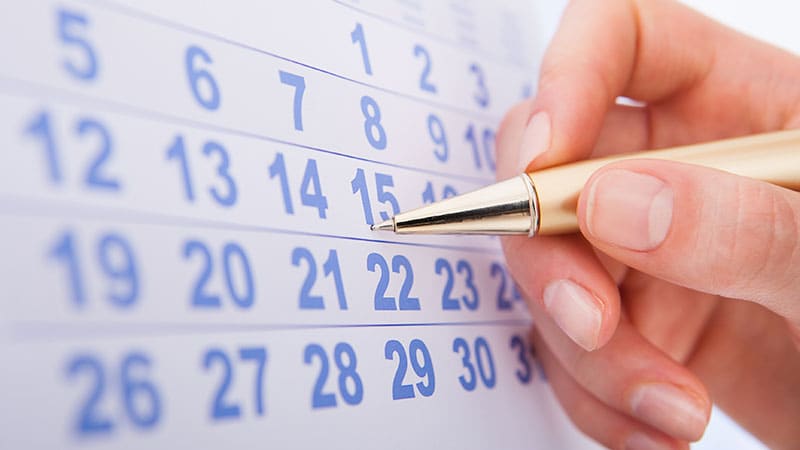Editor’s note: Find the latest COVID-19 news and guidance in Medscape’s Coronavirus Resource Center.
Some people who have received a COVID-19 vaccine have reported a temporary change in their menstrual cycles, according to a new study published in BMJ Medicine.
Vaccinated people had an adjusted increase in menstrual cycle length of less than 1 day with both the first and second vaccine doses. The increase wasn’t associated with a change in the number of days of menses, or bleeding. The changes appeared to be similar regardless of the type of COVID-19 vaccine.
“These findings provide additional information for counseling women on what to expect after vaccination,” Diana Bianchi, MD, director of the National Institute of Child Health and Human Development, said in a statement.
“Changes following vaccination appear to be small, within the normal range of variation, and temporary,” she said. Bianchi wasn’t involved with the study.
The National Institute of Child Health and Human Development and the National Institutes of Health’s Office of Research on Women’s Health funded the study, which was part of a $1.67 million award given to five institutions to research the potential links between COVID-19 vaccination and menstrual changes.
Researchers at universities in Oregon, Massachusetts, London, and Edinburgh looked at data for international users of Natural Cycles, a menstrual cycle tracking app, between October 2020 and November 2021. (The users had the option to consent to the use of their de-identified data for research.)
The research team looked at information from nearly 20,000 people between ages 18 to 45 in the U.S., Canada, U.K., and Europe, representing more than 250,000 cycles. They included data for at least three cycles before and one cycle after the vaccine among the nearly 15,000 vaccinated people and at least four cycles during a similar time period in the nearly 5,000 unvaccinated people.
About 80% of the participants were under age 35. Two-thirds received the Pfizer/BioNTech vaccine, 17% received the Moderna vaccine, 9% received the Oxford AstraZeneca vaccine, and 2% received the Johnson & Johnson vaccine.
Overall, vaccinated people had a 0.71 day increase in their cycles after the first dose and a 0.56 day increase after the second dose. Those who received two doses in one cycle had an increase of 3.7 days, though there wasn’t an increase in the days of bleeding.
The changes were temporary. In the cycle after vaccination, the cycle length was similar to before the vaccine among those who had one vaccine dose in a cycle, with a 0.02 day increase. For those who had two doses in one cycle, their next cycle still had a 0.85 day increase.
There was also a significant increase in the number of people who had a more than an 8-day increase in their cycle length, the researchers found. About 1,342 participants — 6.2% of the vaccinated people and 5% of the unvaccinated people — reported an increase of more than 8 days. Those who were younger and who had a longer cycle length before vaccination were more likely to report the increase.
“A change in cycle length of less than eight days is considered within the normal range of variation,” the NIH said. “Although small menstrual changes may not be meaningful to health care professionals and researchers, perceived changes in a bodily function linked to fertility may be alarming to those experiencing it and could contribute to vaccine hesitancy.”
The researchers noted several limitations, including that people using hormonal birth control weren’t participants since the app focuses on natural cycles. The researchers also were limited in the number of post-vaccine cycles they could calculate during that time and weren’t able to account for the effect of potential COVID-19 infection, which could also lengthen cycles.
The study findings match up with a previous study published by the same group of researchers in January, which focused on women in the U.S. and found the average menstrual cycle length increased by about a day after vaccination.
The researchers called for future studies on other aspects of vaccination-linked changes to menstrual cycles, such as unexpected bleeding, menstrual flow, and pain. They also noted the importance of determining the physical reasons why these changes might occur.
“Our research was not designed to determine why these changes might happen,” the researchers wrote. “These changes are probably due to temporary vaccine-related activation of immune response but more research is needed.”
Sources
BMJ Medicine: “Association between menstrual cycle length and COVID-19 vaccination: global, retrospective cohort study of prospectively collected data.”
National Institutes of Health: “Study confirms linked between COVID-19 vaccination and temporary increase in menstrual cycle length.”
Obstetrics & Gynecology: “Association Between Menstrual Cycle Length and Coronavirus Disease 2019 (COVID-19) Vaccination: A U.S. Cohort.”
Source: Read Full Article
